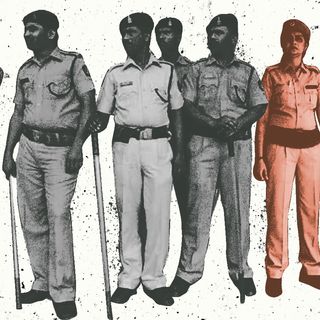After only two women were announced as part of the 20-person lineup for Japan’s new cabinet, a member of the ruling party described Japan as a “democracy without women,” directing her ire and disappointment at her own party.
“Women make up half of Japan’s population and 40% of the LDP grassroots membership. If women do not have a place to discuss policies they want enacted, Japan’s democracy cannot help but be biased,” Tomomi Inada, former defence minister from the governing Liberal Democratic party (LDP), said.
Earlier this month, the fact that there were no female contenders in the race for the Prime Minister’s position, was also criticized. However, all three of the male candidates spoke of promoting female participation in Japanese society, and subsequently, female MPs submitted recommendations on female representation in the cabinet and on the party’s executive. “But looking at the result, with just two women in the cabinet, it looks like our proposals weren’t taken that seriously,” Inada said. In fact, this a small step back from the previous dismal composition of three women, out of the 20 seats, in the country’s erstwhile cabinet.
According to the Global Gender Gap Index 2020 by the World Economic Forum (WEF), Japan’s global ranking on gender parity was 121, out of 153 countries. But, at 112, having slipped down four places since 2018, India isn’t faring remarkably well either.
Related on The Swaddle:
Government Committee Selected to Reform Criminal Laws Lacks Diversity of Representation
Earlier this year, following the elections in Delhi, a grand total of zero women were sworn in to the cabinet — despite the fact that while only 12 women from the now-ruling party were given the opportunity to contest, a staggering eight had emerged as winners. With the balance thus tipped, it is hardly surprising that AAP’s “women-friendly policies” like free rides in buses, public transport equipped with marshals, and installation of CCTV cameras in public places, have continued to draw censure, since before the all-male cabinet was formed, for reeking of a masculine perspective that looks at women’s safety from the viewpoint of surveillance, rather than focussing on programmes to sensitize men to prevent crimes against women.
But, Japan and India aren’t alone. Several countries around the world continue to perform poorly in terms of women’s political participation and leadership, ignoring the fact that “the more closely government represents the composition of society as a whole, the more stable its policies are likely to be,” as Human Rights Watch noted. Needless to mention, better gender representation would also help to address concerns that apply exclusively or disproportionately to women, much more effectively. Research also suggests that as more women are elected to power, there is a corollary increase in policies that focus on improving the quality of life, in addition to reflecting priorities of families, women, and also, ethnic and racial minorities.
In fact, an analysis conducted during the pandemic by WEF, found that countries with women leaders reported lower Covid19 deaths — after accounting for population size, and geographical location, related factors. “Our results clearly indicate that women leaders reacted more quickly and decisively in the face of potential fatalities,” Supriya Garikipati, a developmental economist at Liverpool University, and co-author of the study, had told The Guardian.
Reminiscing about speech she gave at a new year’s event in her constituency, Inada said: “Most of the people listening to me were men, but when I went to the kitchen, the female supporters were doing all the cooking. This is the political landscape of the LDP that I want to change.”




